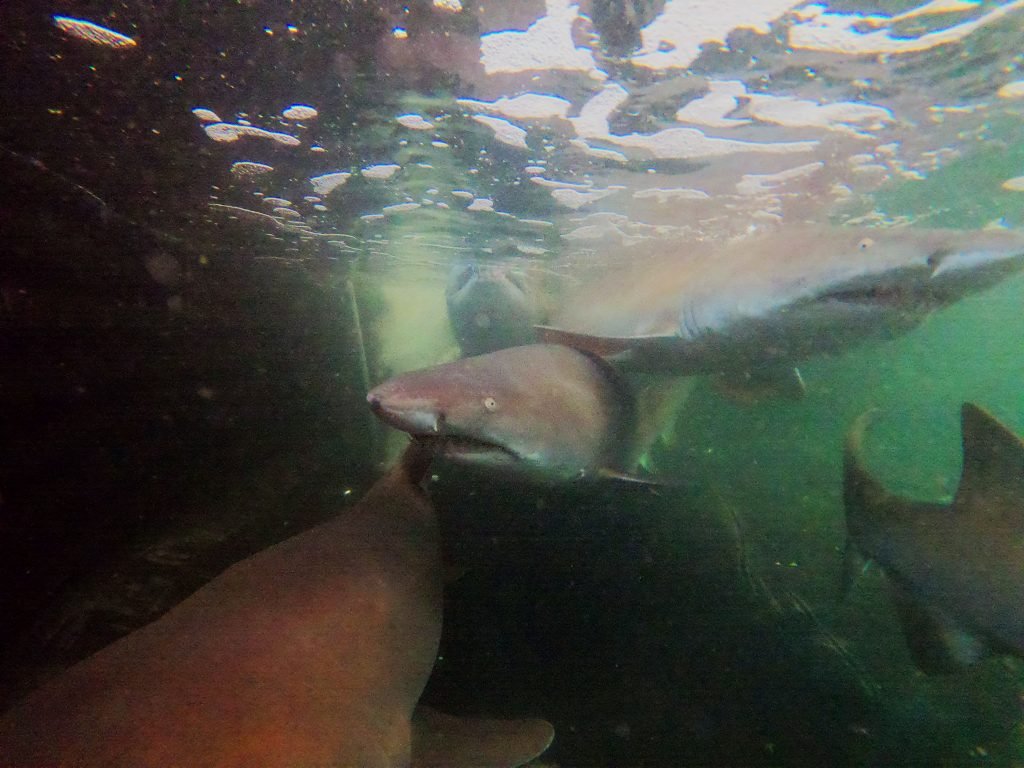Meet the cover girl of our new book Sharks for Kids, A Science Guide to Great Whites, Hammerheads and Other Sharks of the Sea. Written by biologist and shark conservationist David McGuire, the book features sharks from all over the world and discusses taxonomy, biology, ecology and diversity.
Sharks come in all shapes and sizes, from giant whale sharks the size of school buses to tiny dwarf lantern sharks only eight inches long. Sharks for Kids introduces you to these magnificent creatures through vivid illustrations and photographs of some of the biggest, smallest, and strangest sharks swimming the seas. In this top choice among sharks books for kids, you’ll get to know goblin sharks, thresher sharks, and many more including the curious sand tiger shark!
The sand tiger shark (Carcharhinus taurus). Sand tigers generally hunt at night, just above the sea floor in relatively shallow waters. Sand tiger sharks hunt close to shore but also as deep as 200 meters. Sand tiger sharks look ferocious, with a row of tri- cuspid jagged teeth that you can see even when their mouths are closed, but they are generally docile.

Tan colored, these sharks have a flattened, conical snout with an open mouth filled with protruding, pointed teeth. They are light brown on the dorsal surface with scattered dark spots, and the first dorsal fin far back on the body. The ventral surface is light colored. They have broad triangular fins and a distinct asymmetrical (heterocercal) tail fin with an enlarged upper lobe. The sand tiger shark can be found in most warm seas throughout the world except for the eastern Pacific. A warm watered species frequenting tropic and sub tropical waters, they migrate north and south with seasonal temperature changes.
These sharks give live birth to two pups every other year. The embryos exhibit intrauterine cannibalism). In each uterus, the largest or most developed embryo eats the remaining eggs and less developed embryos, emerging fit and well fed.
Sand tiger sharks are illegal to catch in the commercial longline shark fishery on the Atlantic and Gulf coasts of the United States. The International Union for Conservation of Nature and Natural Resources (IUCN) classifies the sand tiger as “Vulnerable”. Scientists estimate a reduction in the Atlantic population of at least 20% over the last 10 years or three generations.
This means the species faces high risk of extinction in the wild and in the near term future internationally.